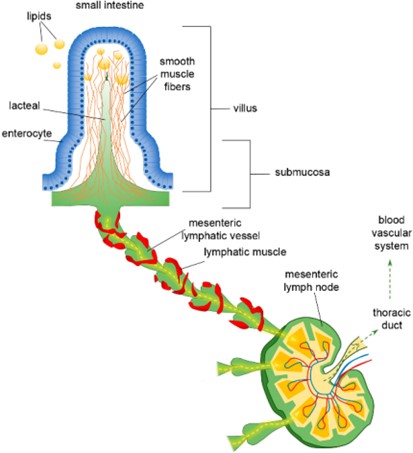The antibodies produced in allergic reactions:
Belong to the immunoglobulin E group.
Are called allergens.
Belong to the immunoglobulin G group.
Are secreted by mast cells.
The Correct Answer is A
The antibodies produced in allergic reactions belong to the immunoglobulin E group.
These antibodies bind to an allergen, triggering a release of histamine, which causes allergy symptoms.
They also help to fight parasitic infections.
Choice B is wrong because allergens are not antibodies, but substances that cause an allergic reaction.
Choice C is wrong because the antibodies that belong to the immunoglobulin G group are not involved in allergic reactions, but in fighting bacterial and viral infections.
Choice D is wrong because mast cells are not antibodies, but cells that release histamine and other chemicals when activated by IgE antibodies.
Nursing Test Bank
Naxlex Comprehensive Predictor Exams
Related Questions
Correct Answer is B
Explanation
A lacteal is a lymphatic capillary that absorbs dietary fats in the villi of the small intestines.
The lacteals merge to form larger lymphatic vessels that transport chyle (a milky fluid containing fat and lymph) to the thoracic duct where it is emptied into the bloodstream at the subclavian vein.
Choice A is wrong because it is the opposite of the true statement.
Lacteals are not false, they are real structures that play an important role in fat absorption and transport.

Correct Answer is C
Explanation
Pathogens are disease-causing agents. They can be bacteria, viruses, fungi, protists, or parasitic worms.
They can infect other organisms and cause various diseases.
Choice A is wrong because phagocytic leukocytes are a type of white blood cell that can engulf and destroy pathogens.
They are part of the immune system and help fight infections.
Choice B is wrong because antibodies are proteins that can bind to specific antigens on the surface of pathogens and mark them for destruction by other immune cells.
They are also part of the immune system and help fight infections.
Choice D is wrong because agents that alter DNA base sequences are not necessarily pathogens.
They can be mutagens, such as chemicals or radiation, that can cause changes in the DNA of cells.
Some mutagens can also be carcinogens, which can cause cancer.
Whether you are a student looking to ace your exams or a practicing nurse seeking to enhance your expertise , our nursing education contents will empower you with the confidence and competence to make a difference in the lives of patients and become a respected leader in the healthcare field.
Visit Naxlex, invest in your future and unlock endless possibilities with our unparalleled nursing education contents today
Report Wrong Answer on the Current Question
Do you disagree with the answer? If yes, what is your expected answer? Explain.
Kindly be descriptive with the issue you are facing.
